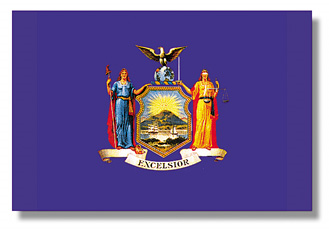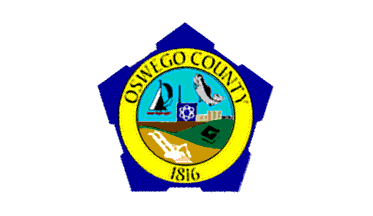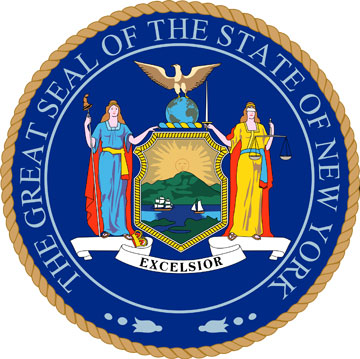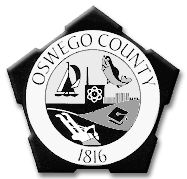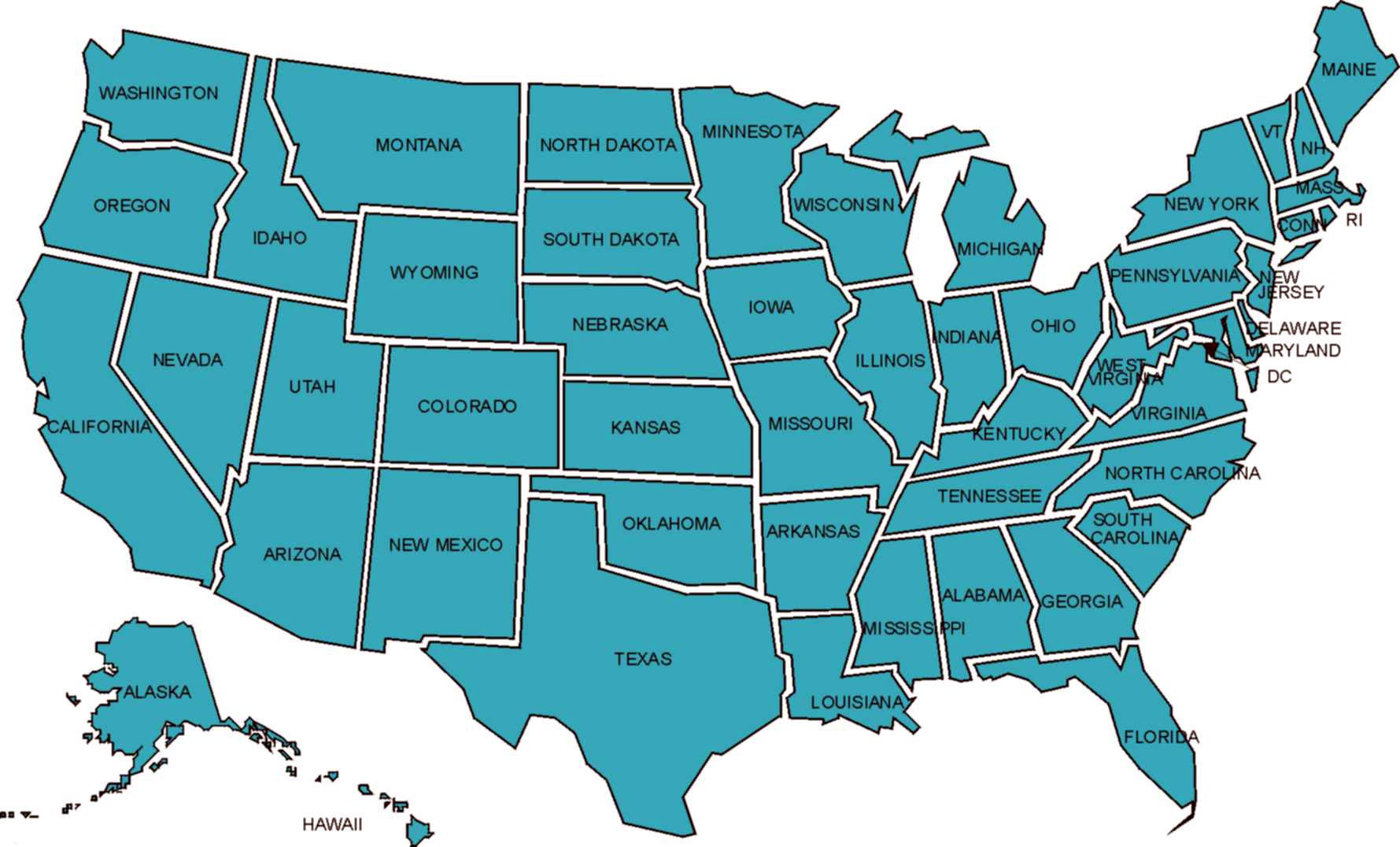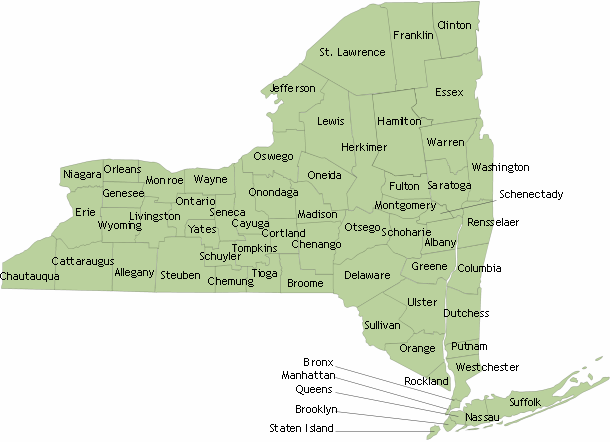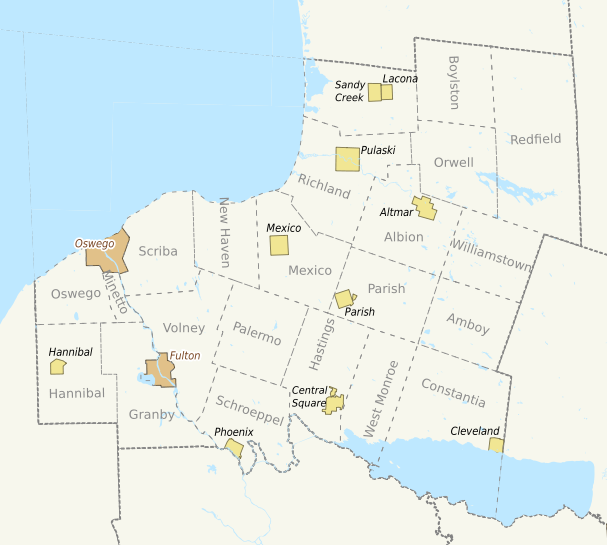Town Functions
Town Government
Town government in New York can be traced to both New England and Dutch colonial government arrangements in the Hudson Valley. The state's towns
encompass all territory within the state, except territory within cities and Indian reservations. In size, towns are the most diverse of all the units
of local government.
Towns existed independently in the colonial period. When New York became a state, towns were generally regarded as creations of the State Legislature
that existed to serve state purposes. Town governments now, however, have long been recognized as primary units of local government. They possess
authority to provide virtually the full complement of municipal services. By statutory and constitutional adjustments, towns are flexible units that
can function as rural or as highly urbanized general purpose units of government, depending on local needs.
Everyone in New York who lives outside a city or an Indian reservation lives in a town. There are more towns in New York than there are cities and villages
combined.
In New York, "town government" includes both the Town of Hempstead, with a 2005 estimated population of 751,276, more than twice that of the City of
Buffalo, and taxable real property of over $87 billion, and the Town of Red House, Cattaraugus County, with 37 residents and a taxable real property of $81
million. Between these two extremes are 930 other towns, some of which provide to their residents a great number of municipal services, while others do
little more than maintain a few rural roads.
The Beginnings of Town Government
Town government in New York has both Dutch and English roots, with even earlier antecedents in the Germanic tribes - the English word "town" is derived
from the Teutonic "tun," meaning an enclosure.
The Dutch communities established in the Hudson Valley in the early seventeenth century were easily integrated with the strong, tightly knit version of
town government that was brought a few years later by immigrants from Massachusetts and Connecticut to the eastern shores of Long Island. In 1664, Charles
II claimed the territory between the Connecticut and the Delaware rivers by right of discovery and conveyed it to the Duke of York. His agent, Colonel
Nicolls, armed with a commission as Governor, appeared with a fleet off the shore of New Amsterdam, and the Dutch quickly capitulated.
Immediately after they established British sovereignty in New York in 1664, the English began to more fully develop the patterns of local government.
Issued in 1665, the Code of Laws, known as the "Duke's Laws," confirmed the boundaries of 17 existing towns and provided for basic organization of the town
governments. These laws gave freeholders the right to vote and provided for a town meeting system resembling that still used in New England.
Town government continued to develop throughout the remainder of the Seventeenth and into the Eighteenth Century. A town court system grew up. Provision
was made for a chief fiscal officer, known as a town treasurer, a forerunner of the present supervisor. In 1683, the first general property tax was
imposed. In 1703, provision was made for a system of highways.
The State Constitution of 1777 recognized the existence of 14 counties and some towns. The Constitution provided that "it shall be in the power of the
State Legislatures of this State for the advantages and conveniences of the good people to divide the same into such other and further counties and
districts as it may then appear necessary." Between 1788 and 1801, the Legislature was especially active in dividing counties into towns. However, the form
of town government remained essentially the same as it had been under British rule.
In the early decades of the Nineteenth Century, town government began to assume a more modern form. In the Ninth Edition of the Revised Statutes of New
York, laws affecting towns were segregated in Chapter 20 of the General Laws. This chapter was the immediate predecessor of the Town Law. The title "Town
Law" appears to have been used first in its modern sense when laws affecting towns were recodified by Chapter 569 of the Laws of 1890 and made applicable
to most towns with certain exceptions. In 1909, another recodification grouped statutes applicable to towns into Chapter 62 of the Consolidated Laws.
Despite these recodifications, the Town Law still contained general statutes and special acts which duplicated each other. In 1927, a Joint Legislative
Committee set about to recodify the Town Law once again. The result was the present Town Law, which is Chapter 634 of the Laws of 1932.
Characteristics of Towns Geography
Towns and cities encompass all the lands within the state, except Indian reservations, which enjoy special legal status. The 932 towns in the state vary
greatly in size, ranging from the Town of Webb in Herkimer County (which is larger than 11 counties and covers 451.2 square miles) to the Town of Green
Island in Albany County (which covers only 0.7 of a square mile).
Towns are not distributed equally among the counties. Nassau County, with a population of 1, 334,544 in 2000, being the second most populous county outside
New York City, has only three towns, while Cattaraugus County, with a population of 83,955 (less than one-fifteenth of Nassau County's population),
contains 32 towns.
Legal Status
Courts have determined that towns are true municipal corporations. Previously the courts had ruled that towns were: "…involuntary subdivisions of the
state, constituted for the purpose of the more convenient exercise of governmental functions by the state for the benefit of all its citizens" (Short v.
Town of Orange, 175 A. D. 260, 161 N.Y.S. 466 (1916)). The Town Law definition now confirms that towns are municipal corporations:
"A town is a municipal corporation comprising the inhabitants within its boundaries, and formed with the purpose of exercising such powers and discharging
such duties of local government and administration of public affairs as have been, or, maybe conferred or imposed upon it by law." (section 2, Town Law)
Towns were finally granted full membership in the local government partnership when, in1964, they were constitutionally granted home rule powers (see
Chapter IV).
Development | Rural to Suburban
Physical development came to towns before they emerged as municipal corporations. Indeed, the pressing needs arising from physical development gave impetus
to their legal development. For many years towns provided only basic government functions, such as organizing and supervising elections, administering
judicial functions, and constructing and maintaining highways. In carrying out these governmental functions, towns served their own needs while also
carrying out the state's purposes. The elective machinery took care of maintaining local political organizations as well as giving town officials contact
with, and an element of control or influence in, county, state and federal political organizations. The local judicial function, in conjunction with the
police function of county sheriffs and state police or military agencies, gave the people of the towns security. Control of highways assured residents of
rural towns that they would maintain contact with their neighbors and distant urban centers, and that they would be able to market their crops.
Even in rural areas, however, the increasing population and its clustering into hamlets gave rise to needs for services not available at the town level.
Towns required all-weather roads to assure year-round access to shops, sidewalks to protect pedestrians, public water to protect public health, sewers to
carry waste away, and police to protect growing populations and increasingly valuable property.
The flight of city dwellers to the suburbs, which began as early as the second decade of the twentieth century, resulted in a continuous, almost geometric
growth in town population. From 1950 to 1990, the population living in towns in New York State increased by 110 percent, while the population of cities
decreased by 20 percent (excluding New York City). While the past two decades have seen a significant slowdown in this shift, an increasing proportion of
the total outward migration during this time period has settled in more rural (as opposed to suburban) towns. New town-dwellers, whether suburban or rural,
have demanded many of the services they had been accustomed to in the cities - water, sewage disposal, refuse collection, street lighting, recreational
facilities and many more. Since suburban development in many cases was formless and without identifiable business centers, village incorporation often
proved problematic. The suburban challenge has fallen upon town government, a challenge to develop services where needed without losing the traditional
role as the most local of local governments.
Government Organization Classification of Towns
The Town Law divides towns into two classes based on population. All towns of 10,000 or over in population as shown by the latest federal decennial census,
with the exception of towns in Suffolk and Broome Counties and the towns of Ulster and Potsdam, are by statute towns of the first class. All towns in
Westchester County, regardless of population, are towns of the first class.
In addition, any town may become a town of the first class by action of the town board, subject to a permissive referendum, if it:
All towns which are not first class towns are towns of the second class. Under the Town Law, there are organizational differences between first class and
second class towns. The elected officers of a first class town are its supervisor, four council persons (unless increased to six or decreased to two as
provided by the Town Law), town clerk, two town justices, a highway superintendent, and a receiver of taxes and assessments. Voters in second class towns,
on the other hand, elect the supervisor, two council persons, two justices of the peace, a town clerk, a highway superintendent, three assessors and a
collector.
In 1962, the Legislature created the additional classification of "Suburban Town." Suburban Towns must be towns of the first class, and must:
Provided a town meets the above criteria, it may become a Suburban Town at the option of the town board, subject to permissive referendum.
When the classes of towns were originally authorized, there was a fairly clear-cut differentiation between the powers allotted to the different classes. As
town powers were broadened, differences in powers among classes became less clear. For example, the Constitutional Home Rule Amendment in 1964 granted to
all towns the local law powers formerly possessed only by Suburban Towns. Even organizational differences have become less sharply defined over time. For
example, legislation enacted in 1976 granted all towns the authority to create and/or abolish elective as well as appointive offices and to restructure the
administrative agencies of town government by local law. Formerly, only Suburban Towns had specific authority to departmentalize town government
operations. For all intents and purposes, all towns, regardless of their statutory classification, possess roughly equivalent legal powers.
Legislative Leadership
The legislative body of the town is the town board. Historically, the town board consisted of the supervisor and the town justices of the peace. The dual
status of justices of the peace (now designated as town justices) as judicial and legislative officers has always concerned students of government, but
this was accepted in rural towns because it was less expensive than separate offices. When classification of towns was introduced, the judiciary was
completely separated from the legislative branch in towns of the first class.
In 1971, the Town Law was amended to allow town boards in towns of the second class to exercise the option of removing town justices from the town board
and electing two additional town councilpersons. In 1976, the Legislature amended the Town Law once again, separating the legislative and judicial
functions in all town governments by removing town justices from town boards.
One of the distinguishing features of town government organization is the lack of a strong executive branch. Virtually all of a town's discretionary
authority rests with the town board. What little executive power the supervisor has is granted by specific statute or by the town board. The town board,
therefore, exercises both legislative and executive functions. This situation is not very different from the basic form of government prescribed by state
law for counties, cities and villages. What is different, however, is that until recently, towns did not possess the same degree of home rule powers
granted to the other units of government to change the basic prescribed forms of government.
It was not until 1964 that home rule was extended to towns. It had previously been extended to villages with a population in excess of 5,000 and to
counties and cities. While the extension of home rule powers to towns was a step forward in the evolution of towns to the status of full-fledged municipal
corporations, towns were still generally bound by a much greater number of specific statutory directives than were counties, cities and villages.
Many of these directives fell within the constitutional definition of "general law," which could not be superseded by exercising home rule power. In this
respect towns suffered in comparison to counties, cities and villages, each of which possessed extensive grants of authority to adopt a structure of
government through the home rule process suitable to their individual needs. In 1976, the Legislature remedied the situation by authorizing towns to
supersede certain provisions of the Town Law relating to the property, affairs or government of the town, notwithstanding the fact that they are "general
laws" as defined by the Constitution. This grant of powers can be viewed as a major expansion of home rule powers for towns, for it equipped them with
powers similar to those enjoyed by other units of local government.
Excecutive Leadership Supervisor
Supervisor
. The Town Law does not provide for a separate executive branch of town government. Because the supervisor occupies the leader's position on the town board, and because town residents often turn to the supervisor with their problems, many people think the supervisor's position is the executive position of town government. But the supervisor is part of the legislative branch and acts as a member and presiding officer of the town board. He or she acts as a full member of the board, voting on all questions and having no additional tie-breaking or veto power.The supervisor is more of an administrator than an executive. The supervisor's duties under law are to: act as treasurer and have care and custody of monies belonging to the town; disburse monies; keep an accurate and complete account of all monies; make reports as required; pay fixed salaries and other claims; and lease, sell, and convey properties of the town, when so directed by the town board.
The basic source of the supervisor's power lies in the position's traditional political leadership and the holder's ability to use this leadership. Familiarity with day-to-day problems of the town often enables the supervisor to influence the policy decisions of the town board.
In 1938, provision was made in the Town Law for a town manager form of government, which would have made possible a greater executive coordination of town functions. The idea did not catch on at that time, and the provisions were repealed in 1957. In 1972, however, the State Legislature enacted special legislation authorizing the Town of Fallsburg to adopt a town manager plan. Then, in 1976, Article 3-B of the Town Law was enacted, once again enabling any town, by local law, to establish a town manager form of government. Since 1998, the Towns of Collins, Erwin, Mount Kisco, Putnam and Southampton have been operating under a town manager form of government.
By delegating a few more specific powers, the Suburban Town Law gives the supervisor a bit more authority. Although designated as "chief executive officer," however, the Suburban Town supervisor has no major new executive powers.
As noted earlier, the Legislature has authorized towns to adopt local laws superseding many specific provisions of the Town Law. The purpose of this legislation was to allow towns to restructure their form of government to provide for an executive or administrative branch separate and apart from the legislative branch of government. Offices such as town executive and town manager may be established and granted powers similar to those granted by counties, cities and villages to the offices of county executive or manager, city mayor or manager, and village mayor or manager.
In addition, section 10 of the Municipal Home Rule Law authorizes local governments to enact local laws relating to the powers, duties, qualifications, number, mode of selection and removal, and terms of office of their officers and employees. Where it is constitutionally permissible, some offices which are elective by statute may be made appointive by local law. Conversely, offices which are appointive by statute may be made elective by local law. Both types of local laws require public referenda. A town may also change the term of office of any of its officers by local law.
Judicial
The state's judicial system has been described in Chapter III. As was pointed out earlier, all town justices were originally members of the town board, but uneasiness over this duality of functions led to the gradual phasing out of their legislative roles. Also, to enhance the level of professionalism of local justices, state law now mandates their training. The jurisdiction of the town court system is townwide, even extending to village territory where it is coincident with that of village courts. The cost of the town judicial system is a town-wide charge.
Operations and Services
The state's judicial system has been described in Chapter III. As was pointed out earlier, all town justices were originally members of the town board, but uneasiness over this duality of functions led to the gradual phasing out of their legislative roles. Also, to enhance the level of professionalism of local justices, state law now mandates their training. The jurisdiction of the town court system is townwide, even extending to village territory where it is coincident with that of village courts. The cost of the town judicial system is a town-wide charge.
Town-Wide Organization and Services
Towns first emerged to carry out general governmental functions as distinguished from "proprietary" functions. These general functions cover the basic
town-wide services still provided by the town. The cost is imposed townwide. Through the years some services have been added, including those which may be
carried out by a town within the territory of a village, either on a cooperative basis or with the consent of the village.
Elective Processes.
One of the primary functions provided by towns on a town-wide basis is the organization and supervision of elections. The individual election district is the primary element in the election machinery. Towns, in all except Monroe, Nassau and Suffolk Counties, must establish and operate all election districts outside cities. In these districts, all inspection clerks and election employees are appointed by the town board upon recommendation from the organized political parties. Party organization is also built around the election district. Party committee members, elected in each election district, form the backbone of town, county and state committees. Hence, when politicians talk about the "grassroots of the party," they are talking about town party committees. Town officers, who are both products of this party organization and its custodians, often remain closely connected to it during their political careers. These party ties tend to give town officials advantages in dealing with counties or the State. It is likely that a town's greatest strength in maintaining and promoting its place in the governmental scheme of things rests with the electoral function. This strength can be brought to bear whenever towns perceive they are about to lose power to other units of government.Representative democracy has traditionally been achieved in almost all towns through the system of electing town board members as at-large representatives. Towns of the first class (generally, towns with a population of 10,000 or more, or those towns with a smaller population that have chosen to become towns of the first class pursuant to Town Law sections 12 and 81) usually elect a Town Supervisor and four town board members as the town legislative body, separate from other elective or appointive town offices such as clerk, justice, and assessor.
Under the current at-large system, each voter may cast a vote for each vacant seat on the board. Casting multiple votes for one candidate is prohibited. The available town board positions are filled by the candidates who receive the highest vote total; a candidate need not receive a majority of votes to assume a seat on the board.
The ward system of electing town board members is an alternative to the at-large system of election and is authorized by sections 81 and 85 of the Town Law. Unlike cities in New York, which have a mix of both atlarge and ward-elected board members, only a handful of towns currently elect board members by ward. As of the year 2000, only 10 of 932 towns in New York use the ward system, and since the mid-1970's, voters have defeated its implementation whenever it has been proposed on the ballot.
A town of the first class may, upon the vote of the town board or upon a duly qualified petition, submit a proposition to the voters for establishing the ward system. If the voters approve the proposition, the county board of elections must divide the town into four wards and fix their boundaries. "So far as possible the division shall be so made that the number of voters in each ward shall be approximately equal" (Town Law section 85[1] ). The ward system is deemed established only upon the date the county board of elections duly files a map "showing in detail the location of each ward and the boundaries thereof" (Town Law section 85[1] ).
The boundaries of the wards are not generally known at the time of the ballot, but are fixed by the board of elections if the proposition is successful. Apart from the constitutional requirement of "one person one vote" (see, Reynolds v. Sims, 377 U.S. 533, 84 S. Ct. 1964) codified in statute by the requirement that wards contain "approximately" the same number of voters, the voter has few assurances regarding how wards will be drawn.
If the ward system is established, the terms of the sitting board members end on December 31, after the first biennial town election held at least 120 days after the ward system is established. The terms of the board members elected by ward commence January 1 following such election.
Only a town of the first class is authorized to both establish the ward system and increase the number of board members from four to six, and such a town may submit both propositions at the same election (Op. Atty. Gen. [Inf.] 90-63; 1968 Op. Atty. Gen. [Inf.] 52;13 Op. St. Compt. 223, 1957). May a town of the second class, which is not authorized to increase the number of board members or establish the ward system, submit a proposition to the electorate to change its classification to first class at the same election it submits the other propositions? Under the authorizing sections of sections 81 and 85 of Town Law, the answer is that the electorate must first approve a change in classification to first class, with subsequent elections necessary to increase the number of board members and to establish the ward system. The Attorney General has opined, however, that a town of the second class may, by enactment of a local law, increase its number of board members and establish the ward system (Op. Atty. Gen. [Inf.] 90-63). Under the Municipal Home Rule Law (MHRL) towns, cities, counties and villages are authorized to adopt local laws not inconsistent with the Constitution or any general law, in relation to, inter alia, "the powers, duties, qualifications, number, mode of selection and removal, terms of office, compensation, hours of work, protection, welfare and safety of its officers and employees" (MHRL, section 10 [1][ii][a][1], emphasis supplied). Such a local law would be subject to a mandatory referendum (MHRL, section 23[2][b], [e], [g] ).
Therefore, if the voters want representation by ward they have the means to establish it.
Tax Assessment.
One of the cornerstones of town government is its authority to assess, levy, collect and enforce payment of taxes. The real property tax remains the most important source of locally raised municipal revenue despite enactments of sales and use, admissions, off-track betting and income taxes. Another major portion of municipal revenue comes from intergovernmental transfers. Fundamental to the levy and collection of real property taxes is the function of property assessment. The goal of property tax assessment is to value property consistently and fairly. The practice has been to make uniform assessments at a constant percentage of full value within a municipality, and to equalize these rates among municipalities. This matter is discussed more fully in Chapter XI.Assessing is done in towns by an assessor or board of assessors. In the past, all towns had to have a board of three assessors. Later, towns were permitted to substitute a single assessor for the board. Still later, the Assessment ImprovementAct of 1970, which required training and county assistance for local assessors, also stated that each town had to provide for a single, appointed assessor unless it took positive action, by way of mandatory referendum, to retain its elected three-member board. All towns also must provide for a board of assessment review, consisting of three to five members, to hear grievances and appeals from determinations of the assessor.
The assessment roll which the town assessor prepares serves a dual, and sometimes triple, purpose. First, it is the basis for all town general taxes and county taxes levied within the town. Second, a copy of the roll must be made available to all school districts within the town and is used, unchanged as to assessments, to prepare the school district tax roll. Third, any village, wholly or partially, within the town may adopt and use the town roll for levying village taxes instead of assessing its own properties.
Levy of Taxes.
The completed tax roll is forwarded to the county together with the town budget and estimates of levies required for town purposes. These amounts, and the county taxes required within the town, are levied and recorded on the tax roll prior to December 31st of each year. At this point, unpaid school taxes from the last school tax roll are also re-levied on the town tax roll.Collection and Enforcement.
In towns of the first class, the collection of taxes is carried out by a receiver of taxes and assessments, an office that may be either elective or appointive by local choice. Normally in such towns, the town receiver also collects all school taxes for school districts located wholly or partially in the town, unless the town and school district have made an agreement to the contrary. In towns of the second class, the collecting officer is the elected town tax collector. However, such towns may abolish the office of collector and, thereafter, the town clerk must collect the taxes.General Administration.
The cost of general administration of town functions, including the salaries of town officers is levied as town-wide charges even where the functions are less than town-wide in scope. For example, the salary of the town superintendent of highways and the capital cost and operation of the town highway garage are both general (town-wide) charges, even though their functions basically cover only part of the town (the portion outside villages). On the other hand, the salaries of highway employees may be either general charges or applied to only part of the town, depending on the highway item to which their time is charged.Part-Town Organization
Services for part of the town may be rendered to either all of that portion of the town outside villages (TOV), or to particular areas of the town by way
of improvement districts or improvement areas.
Until recent decades, the only major service that towns were required to provide to town residents living outside villages was highway maintenance. Town
government provided few services other than general government administration and basic functions, such as justice court. Lately, however, population
growth in TOV areas has resulted in demands for many of the services already provided by villages. It should be noted that these functions, such as waste
collection and disposal, can, and often are, provided on either a town-wide or TOV basis. The more common TOV functions include:
Over the years, village taxpayers' responsibility for sharing the cost of town highways has been one of the most abrasive factors in town-village
relationships. Consequently, there has been a continual search for ways of reducing this friction and promoting equity in the distribution of costs. One
compromise permits towns to exempt village property from assessment for the cost of acquisition and repair of highway machinery, the cost of snow removal,
and several other miscellaneous items.
Fire Protection.
Fire protection is not a town function, since it can only be provided in towns through the medium of districts - fire districts, fire protection districts and fire alarm districts - all of which are discussed in Chapter IX. Since most TOV areas are covered by districts, fire protection can be considered, in a sense, a TOV service.Special Districts.
Towns in the path of suburban growth were not prepared to provide needed services on a town-wide basis. Tax bases were hardly sufficient to support town-wide water or sewer systems. The need was not general enough throughout the town so as to garner voter support for such town-wide services. The expedient answer was, therefore, to create the special district. Large enough to serve the area of need and supported only by the property owners within the district, the special district required from the rest of the town only use of the town's credit to financially support its obligations and use of the town's organization to administer the services within the district. Districts have worked well and have multiplied in both number and type.Unlike the districts discussed in Chapter IX, special districts created under the Town Law are not units of local government, but instead are administered by the town board. Town improvement districts have proliferated, with lighting, water supply, sewerage, drainage, park, public parking, and refuse and garbage districts accounting for over 95 percent of all special districts. The idea has proved so flexible and has worked so well that it has been used to meet some unusual and unique needs. Escalator districts have been formed to relieve weary commuters of their climb to elevated train stations, and dock and erosion control districts have enhanced seaside properties on Long Island.
Special districts have been established, extended and consolidated until, by the end of 2004, there were approximately 1,987 improvement districts (including fire districts) in existence - an average of more than two for each town in the state for 2004.
TABLE 10
Town Special Districts and Fire Districts by Type of DistrictAs of December 31,2004
|
Drainage............................................................. |
66 |
|
Fire.................................................................. |
635 |
|
Lighting............................................................ |
500 |
|
Park................................................................... |
50 |
|
Refuse and Garbage..................................... |
81 |
|
Sewer.............................................................. |
315 |
|
Water............................................................... |
448 |
|
Parking............................................................... |
11 |
|
Other............................................................... |
119 |
|
TOTAL................................................ |
2,225 |
|
Source:Comptroller's Special Reporton Municipal Affairs,1997 |
|
Most special districts can be and are established under general provisions of Articles12 and 12-Aof the Town Law. Those which cannot must be created by act
of the State Legislature.
Under Article 12, a petition from property owners in the area of the proposed district must specify the boundaries of the district and state the maximum
permissible expenditure. For certain types of districts a map showing the boundaries of the district and the proposed improvements must accompany the
petition. The petition must be signed by owners of more than one-half of the total assessed valuation of taxable property in the proposed district,
including at least one-half of the resident-owned, taxable, assessed valuation therein. When such a petition is filed, the town board must call a public
hearing on the proposal and, after consideration, approve or deny the establishment of the district. If the town board approves the establishment of a
district for which the town is to incur indebtedness, it must apply to the State Comptroller for approval. The State Comptroller, after considering the
application, must make an independent determination that establishment of the district will serve the public interest and that it is not an undue burden on
the property or property owners who live in the district. After the State Comptroller approves the petition, the town board may adopt an order establishing
the district.
Under Article 12A, a petition is not required to establish a district; the town board may, on its own motion, subject to a permissive referendum, establish
a district. All other procedural steps are essentially the same as under Article 12.
With the exception of 78 older special districts which retain their separate boards of commissioners, the town board acts as the administrative body for
all improvement districts in a town. Specific provisions of the Town Law authorize a town board to let contracts for the construction of district
improvements, determine the manner of levying assessments to cover costs, set water and sewer rents or other service charges, and provide for the issuance
of obligations to cover capital costs. Although all district costs must be levied against the properties therein, the districts have no debt-incurring
powers of their own.
All obligations issued on their behalf must be general obligations of the town, and are chargeable to town debt limits.
Town Improvements.
As towns have continued to develop in suburban areas, the need for services on a town-wide or at least TOV basis has become more pressing. The "town improvement" is a compromise between the district approach and the provision of services as a true town function. This approach allows a town board to construct infrastructure improvements in specific areas of the town while not establishing a district with defined boundaries. First authorized only for Suburban Towns, authority for town improvements was later extended to all towns. In establishing an improvement by this method, the town board has the option of levying the capital costs against the entire TOV area, or against the benefitted areas only, or of allocating it between the two areas in any way it chooses. The cost of operating and maintaining the improvement must be levied against the entire TOV area. Thus, the town improvement procedure is simpler and more flexible than that available for creating an improvement district.Summary
Many towns in New York are still small governments providing basic services to rural residents and they continue the pattern of town government that originated before the American Revolution. Other town governments, caught in the mass population migrations of the Twentieth Century, have had to provide services usually associated with urban living. Both kinds of town governments - and the gradations between - must deal with problems such as protecting the environment and delivering municipal services against a fiscal background of ever increasing costs. Rising costs will probably compel town government to develop new patterns of working with other governments and new ways to deliver services. Town residents and government officials, who have had to respond to similar challenges in the past, will doubtless continue town government's long tradition of responding to change.

